Mt Emily is nestled in the rolling hills of Boonwurrung Country in South Gippsland, Victoria. This former dairy farm is now being transformed into native forest, supporting local wildlife and delivering considerable climate action.
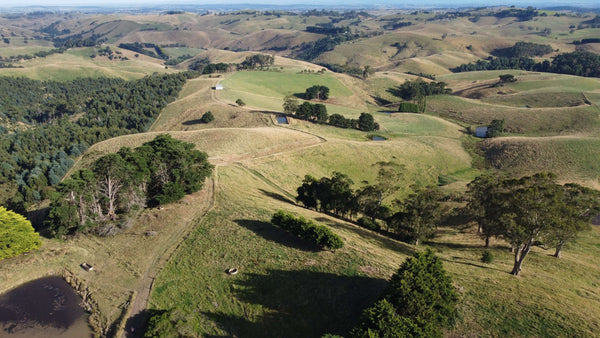
It is one of four properties that forms Greenfleet’s Strzelecki Nature Link, a significant project which is growing 3.5 kilometres of contiguous koala habitat.
Local Strzelecki koalas have been sighted at Wurneet Laang Laang, the most established forest within the Link. Through this project we are expanding pathways for koalas and other native wildlife to travel, feed, and breed.
Greenfleet’s revegetation work began at Mt Emily in 2024 and aims to restore the local vegetation types that existed before the land was cleared.
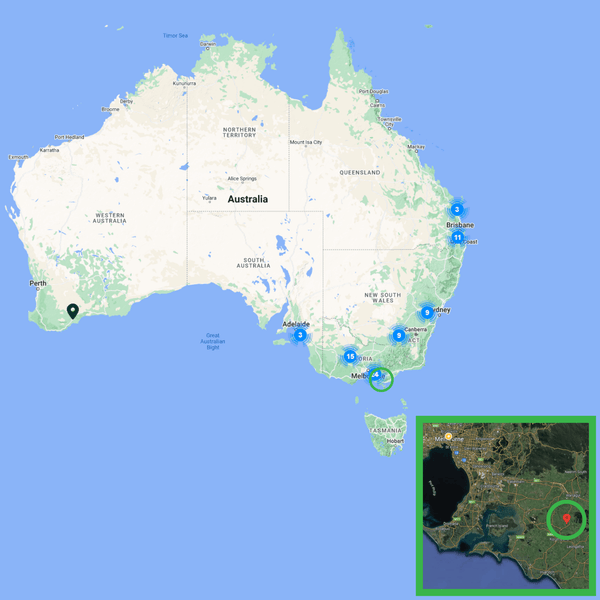
Location & Map
Mt Emily is located within the Strzelecki Ranges, an area made up of steep hills, deep valleys and winding creeks and rivers. Mt Emily borders the north-east edge of our Wurneet Laang Laang forest and sits at the upper catchment of the Lang Lang river.
Mt Emily is one of many Greenfleet projects delivering climate action through native reforestation in the Gippsland region. To see where some of our other native forests are growing, click here.
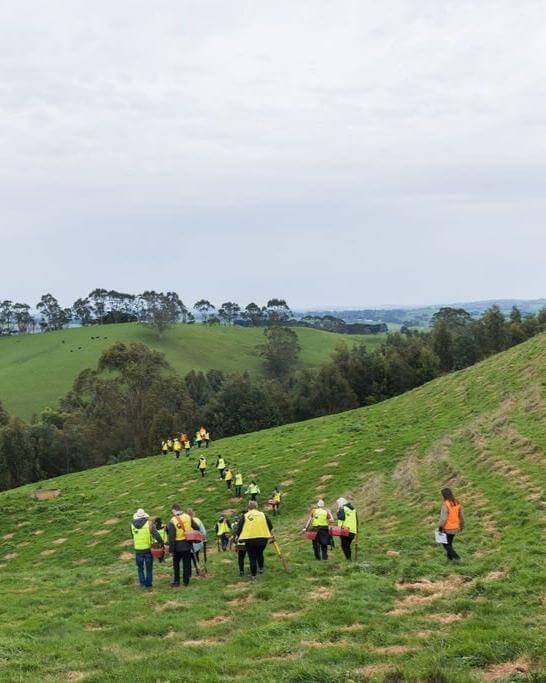
Revegetation Approach & Species Selection
This region originally hosted the Ecological Vegetation Classes (EVC) of damp forest and wet forest — ecosystems that are dominated by towering eucalypt species that can grow to over 30 metres tall.
To assist in the restoration of these unique ecosystems, Greenfleet planted 22 different locally native species at Mt Emily in 2024. These selected species will make up the canopy, mid-story and under-story to restore the previous vegetation that was cleared for farming.
An important eucalypt species planted is the Strzelecki gum (Eucalyptus strzeleckii), a critically endangered tree species only found in the Strzelecki Ranges. Greenfleet’s revegetation team also planted fast-growing manna gum (Eucalyptus viminalis) and blue gum (Eucalyptus globulus), both of which are also habitat for koalas, as well as birdlife and other native animals.
Locally native seedlings were all hand planted by our contracting teams. Greenfleet’s revegetation work also allows us to host some of our dedicated corporate supporters including GPT Group, Monash University, Lyka Petfood, and Bared Footwear to plant trees with us. Providing this opportunity gave our supporters first-hand experience of the work we do and highlighted the need for environmental restoration in this region.
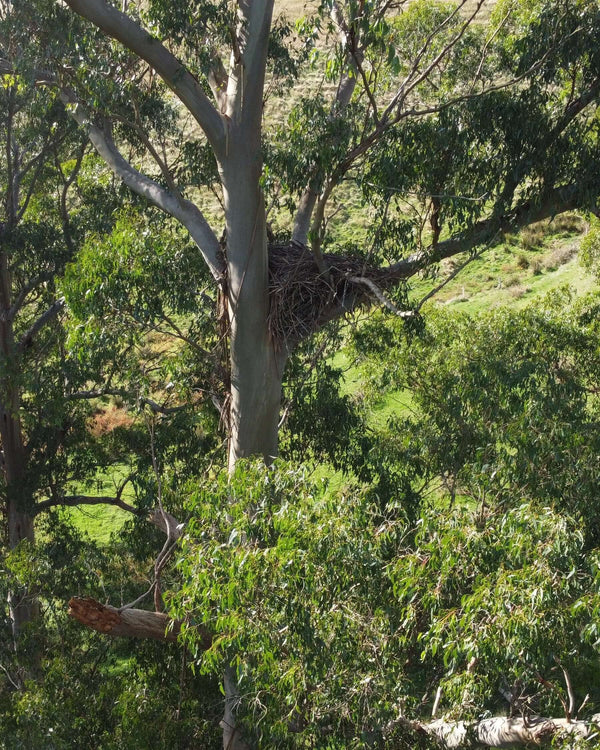
Wildlife Habitat Restoration
The property at Mt Emily is growing eucalypts with the aim to support local koala populations and extend their habitat.
The endemic Strzelecki koalas are found in this region. This species is significant as it descends from the original Victorian koala population, meaning they haven’t been translocated from other areas in Australia. Koala populations in Queensland, New South Wales, and the ACT are now endangered, and Strzelecki koalas are vital for research.
Earlier this year, Greenfleet undertook genome testing on koala scat found in the connecting Wurneet Laang Laang forest. We were thrilled when the results confirmed that Strzelecki koalas were inhabiting eucalypts the Greenfleet had planted in 2016.
A pair of breeding wedge-tailed eagles have been seen in the remnant forest at Mt Emily. This picture shows an existing nest in a tall manna gum (Eucalyptus viminalis). These magnificent predators are the largest bird of prey in Australia, and hold great significance for the Traditional Owners, who name them Bunjil in Boonwurrung language.
Many other bird species have been recorded around Mt Emily, including kestrels, Australian wood ducks, and endangered gang-gang cockatoos. You can read more about the area’s native bird populations here.
Mt Emily is also home to wombats, as they make their burrows in the loose soil near creeks and gullies. The dam on the property also hosts a healthy and noisy frog population.
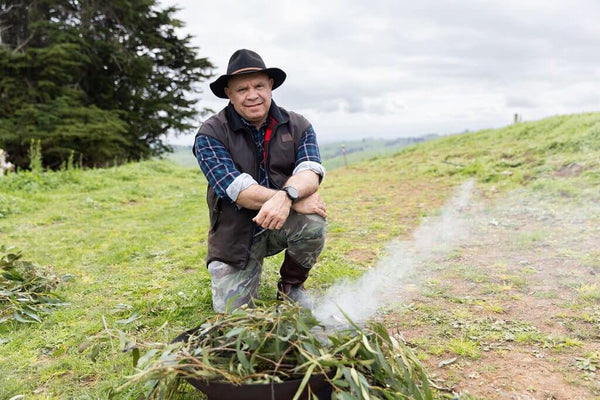
Working With Traditional Owners
We are proud to work with the Boonwurrung Land and Sea Council through our work in the Gippsland region. Gurnai Kurnai man, William Pepper, has joined us on our property many times, and this year helped Welcome our supporters to Country as a part of our planting events. He generously shares his cultural learnings with Greenfleet and our supporters, so we can better understand what makes this land so important to Traditional Owners.
Image: William Pepper from the Boonwurrung Land and Sea Council Welcomes us to Country with a Smoking Ceremony.
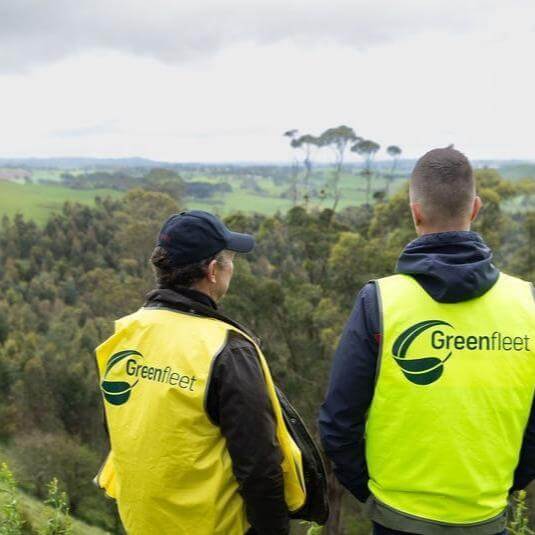
Climate Action
Greenfleet uses the Full Carbon Account Model (FullCAM) to measure the carbon uptake at our revegetation sites. This model was developed by the CSIRO and is approved by the Department of Climate Change, Energy, the Environment and Water.
The region of Gippsland where Mt Emily is located is known for its high carbon sequestration potential. This forest is expected to remove over 105,000 tonnes of carbon from the atmosphere in its lifetime, which is the equivalent of what 24,000 average vehicles emit on Australia’s roads in a single year.
The forest growing at Mt Emily is legally protected for 100 years and you can read more about our 100-year forest protection here.
Location Size
38 hectares near Korumburra, Victoria
Planting Dates
2024
Species
- Silver wattle (Acacia dealbata)
- Australian blackwood (Acacia melanoxolyn)
- Prickly moses (Acacia verticillata ssp. Verticillata)
- Dogwood (Cassinia aculeata)
- Three-veined cassinia (Cassinia trinerva)
- Mountain grey gum (Eucalyptus cypellocarpa)
- Southern blue gum (Eucalyptus globulus)
- Eurabbie blue gum (Eucalyptus globulus subspecies bicostata)
- Messmate (Eucalyptus obliqua)
- Mountain ash (Eucalyptus regnans)
- Strzelecki gum (Eucalyptus Strzeleckii)
- Manna gum (Eucalyptus viminalis)
- Hop goodenia (Goodenia ovata)
- Yarra gurgan (Kunzea leptospermoides)
- Prickly tea-tree (Leptospermum continentale)
- Woolly tea-tree (Leptospernum lanigerium)
- Swamp paperbark (Melaleuca ericifolia)
- Snow daisy bush (Oleria lirata)
- Tree everlasting (Ozothamnus ferrigineous)
- Hazel pomaderris (Pomaderris aspera)
- Victorian Christmas bush (Prostanthera lasianthos)
- Kangaroo apple (Solanum aviculare)


